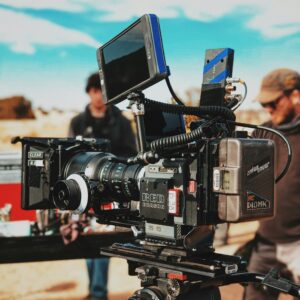Shadows Reimagined: Defining the Essence of Modern Film Noir


Film noir, originally a term used to describe the moody, shadow-laden crime dramas of the 1940s and 1950s, has evolved significantly while retaining its core themes and aesthetics. Modern film noir, or neo-noir, adapts these traditional elements to contemporary settings, incorporating modern themes and technology while indulging in the genre’s characteristic cynicism and moral ambiguity. This article explores what defines modern film noir, identifying the key components that link it to its classic roots while highlighting the innovations that mark its evolution.
What Defines Modern Film Noir?
Visual Style and Aesthetics
High-Contrast Visuals: One of the most enduring characteristics of film noir is its visual style. Neo-noir has preserved classic noir’s high-contrast, chiaroscuro lighting, which uses stark light and shadows to create a sense of psychological tension and visual intrigue. Modern film noir often employs color imaginatively, using saturated hues to add a layer of symbolism or emotion to the black-and-white palettes of the past.
Urban Landscapes: The settings in modern noir have evolved but often remain urban, reflecting the chaos and anonymity of city life. These environments are depicted as labyrinthine and menacing, a concrete jungle where danger lurks around every corner. The setting is not just a backdrop but an active participant in the narrative, reflecting the characters’ isolation or entrapment within their own lives.
Thematic Depth and Complexity
Moral Ambiguity and Alienation: At its core, film noir explores the darker sides of human nature. Modern noirs continue to delve into themes of moral ambiguity and humanity’s flawed nature. Characters in these films are complex and multifaceted, often grappling with decisions that pit personal desires against a moral compass that may be skewed or broken.
Existential Themes: Contemporary noirs tend to weave existential questions into their narratives, pondering characters’ places in a seemingly indifferent or hostile universe. Themes of existential dread, identity, and the search for meaning in a chaotic world are standard, providing a deeper psychological layer to the plots and character motivations.
Character Archetypes
The Antihero: Modern noir often centers around an antihero whose moral and ethical choices are questionable yet who usually acts as the story’s protagonist. This character may be a detective, a criminal, or an ordinary person caught up in extraordinary circumstances. Their journey is typically one of navigating a world rife with corruption and betrayal.
The Femme Fatale: While the classic femme fatale was often a one-dimensional character symbolizing temptation and danger, the modern femme fatale is usually more complex. She retains her allure and mystery but is frequently portrayed as having agency, depth, and a compelling backstory. Modern noirs might explore her motivations and vulnerabilities, making her a central figure in the narrative rather than merely a catalyst for the male protagonist’s downfall.
Plot and Narrative Techniques
Non-linear Storytelling: Modern film noir frequently employs non-linear narratives, including flashbacks, flash-forwards, and fragmented storylines that challenge the viewer to piece together the plot. This complexity mirrors the characters’ lives’ thematic ambiguity and moral complexity.
Blending Genres: Today’s noir often blends with other genres, such as sci-fi, fantasy, and thriller, to create a fresh perspective on the noir template. Films like “Blade Runner 2049” combine sci-fi elements with noir aesthetics to explore futuristic themes through a noir lens, effectively using the genre’s traditional moodiness to enhance the dystopian aspects of the narrative.
Cultural Reflections
Societal Critique: Modern noirs frequently comment on contemporary social issues, including politics, gender dynamics, economic disparity, and the impact of technology on society. These films use noir elements to critique or highlight these issues, reflecting contemporary societal anxieties much like their predecessors did in the post-war era.
Technological Paranoia: In an age dominated by technology, modern film noir often incorporates elements of surveillance, digital footprints, and the loss of privacy. This not only updates the genre’s characteristic paranoia and mistrust but also resonates with contemporary audience fears about the digital age.
Modern film noir is a dynamic and evolving genre that respects its roots while boldly addressing contemporary themes and issues. It retains the classic noir’s visual flair and thematic complexity yet adapts to changing times with innovative storytelling techniques and more profound character development. Modern film noir continues to captivate audiences through its unique style, narrative, and introspection blend. It offers a lens to explore and reflect on the darker sides of today’s cultural and existential landscapes. As long as filmmakers continue to explore these depths, the shadows of noir will keep evolving, proving that even in our modern world, some corners remain intriguingly dim.
